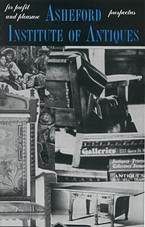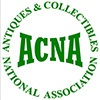 $5 Warhol Sketch Lists For $1.9 Million $5 Warhol Sketch Lists For $1.9 Million New York - We've all heard the stories before about the incredible discoveries and massive price realizations that can come from a simple happenstance stop-over at a local garage sale, but how often do these rare and valuable finds really occur in today's world of instant price-checks, and eBay comparison apps. For many antique and vintage dealers, the answer is surprisingly, more often than you might think. While most dealers will tell you that they're certainly not making "million-dollar" finds on a regular basis, many will acknowledge that they are still sourcing great inventory from the tried-and-true garage sale platform, despite the advances in technology that allow amateur sleuths and collectors to compete for the same items. 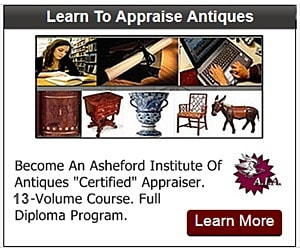 Even with the current Internet frenzy regarding the recent auction of a garage sale bowl that was bought for $35 in Connecticut, and sold at Sotheby's for just over $720,000, Mark Davies, an online collector and dealer in porcelain for over thirty years, says he believes that finds of this caliber, while still quite rare, are more common than people might know. "I haven't made six-figures, or anything like that," says Davies, "but over the years I've purchased multiple examples from yard sales that I went on to resell for hundreds of times more than what I paid." In some instances, Davies says that he's earned thousands of dollars off of items he found discarded at the end of a sale. "They were literally throwing the stuff out." says Davies. While not every outing can bring in such rewards, Davies confesses that if he had to add-up his best inventory finds over the last thirty years, hands-down, it would still be his picks from Saturday morning yard-sales that provided the most return on investment.  $35 Ming Bowl Sells For $722,000 $35 Ming Bowl Sells For $722,000 Many dealers acknowledge that sourcing out good quality items can be tougher today than in the past, since it's not only those holding the garage sale who are doing their research, but also the customers. Cheryl Oaks, an antique dealer from Irvine, California says that sales she attends today are littered with armies of phone-holders conducting online price-checks and and bid comparisons. "It's obviously not what you want to see," says Oaks, "but by the same token, I've found that a lot of people tend to get frustrated when they can't get quick and definitive answers, and will often leave an item behind because they're unsure about its actual value or authenticity." Oaks believes that a lot of this has to do with information overload. "They're not really professionals, they're just punters out looking for something to do," she says. "When they come across an item they can't readily identify, they become inundated with a slew of online examples, which tends to create uncertainty." Oaks says she's lost out a few times to the Saturday morning crowd, but in the long run, says that some of her best inventory still comes from garage sales, including some original Stickley Mission chairs she once picked up after a seller offered her a nominal fee to just 'haul them away.'  $13 Garage Sale Ring Valued At $500K $13 Garage Sale Ring Valued At $500K For others in the market, garage "saleing" has become more about strategy. Bruce Hodgson, an antique and vintage jewelry dealer from South Florida, says that over the years, even though he's developed a multitude of different systems for acquiring inventory, he keeps coming back to garage sales. "There's simply no replacing box-lots," says Hodgson. "Everyone can see a beautiful walnut table that was passed on down from Grandma, but what's often not seen are the pieces of family jewelry that just get dumped into the bottom of boxes." Hodgson says he can't recount the number of times he's come across rings and broaches thought to be worthless that ended up helping him set monthly sales records. "I'm very particular about what garage sales I go to," says Hodgson, "I plan my route around neighborhoods with retirees - the older the folks - the older the stuff." Hodgson also believes that having a lifetimes worth of experience in the jewelry business has helped him immensely when it comes to competition from the Saturday morning price-checkers. "It's not nearly as easy to identify a genuine piece of antique jewelry from a picture on a phone, as it is in person," says Hodgson. "You're definitely going to be handicapped if you can't bring some prior knowledge to the sale." While most dealers would likely agree that garage sale competition has been getting stiffer over the last ten years due to the publics increased awareness of 'value' items, many would also argue that there are simply more garage sales now than ever before due to the aging boomer population. For Mike Horlock, who has been picking sales in the Atlanta region for the last forty years, it's become a delicate balance. "Prior to the boomers disposing of their goods and chattels, most of what I found was headed straight to flea markets for resale - today, it's pretty much going straight to antique and vintage shops." Horlock says he would have been lucky to come across high-value garage sale items back then, but today, it's almost a common occurrence. - AIA Staff Writers 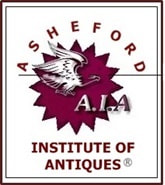 NOTE: For readers seeking more information about the Asheford Institute Of Antiques distance-learning program on professional-level appraising, the study of antiques, collectibles, vintage and mid-century modern items, please click here to visit the school's Home Page. Should you have additional questions about the Asheford program, you can also write to the school at: info@asheford.com or call the Registrar's Office toll-free at: 1-877-444-4508. |
AIA StaffWe're providing our students and reader's with the latest breaking news on events and happenings that we think might be of interest to both collectors and dealers alike. Including changes within the world of antiques, vintage, collectibles and appraising that might just have an effect on your bottom line. We're also interested in hearing from you - so if you've got a great newsworthy story, let us know, and you just might find it here! Archives
July 2024
CategoriesLegal Disclaimer: Extraneous opinions, statements and comments made by individuals represented within these posts do not necessarily reflect those of the Institute. The publication naming of specific business entities, organizations, and concerns, contained herein, in no way represents an endorsement or recommendation of services or products by the Institute. Publicly identifiable information contained herein (including, but not limited to contact information), has been intentionally limited where possible, due to privacy and legal concerns related to the digital dissemination of information through online means. All views expressed herein are those of their respective owners. The Institute is in no way responsible, financially or otherwise, for the accuracy or validity of statements contained within published posts from sources that originate and appear outside of the written and expressed views of those submitted by the Institute.
|
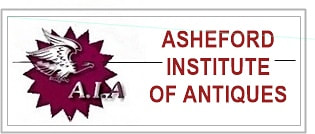
 RSS Feed
RSS Feed
